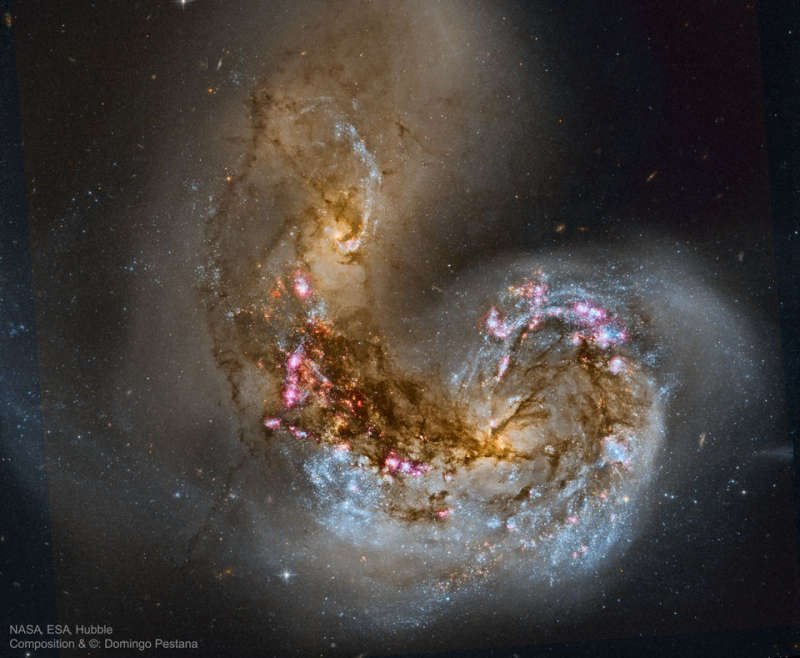Credit & Copyright: Domingo Pestana
Explanation:
This galaxy is having a bad millennium.
In fact, the past 100 million years haven't been so good,
and probably the next billion or so will be quite tumultuous.
Visible toward the lower right, NGC 4038 used to be a normal spiral galaxy, minding
its own business, until NGC 4039, to its upper left,
crashed into it.
The evolving wreckage, known famously as
the Antennae, is featured here.
As gravity restructures each galaxy, clouds of gas slam into each other,
bright blue knots of stars form, massive stars form and
explode,
and brown filaments of dust are strewn about.
Eventually the
two galaxies
will converge into one larger spiral galaxy.
Such collisions are not unusual, and even our own
Milky Way Galaxy
has undergone several in the past and is
predicted to collide
with our neighboring
Andromeda Galaxy in a few billion years.
The
frames that compose this image were taken by the orbiting
Hubble Space Telescope by professional astronomers to
better understand galaxy
collisions.
These frames -- and many other deep space images from
Hubble -- have since been
made public,
allowing interested amateurs to download and
process them into, for example, this visually stunning composite.
1999 2000 2001 2002 2003 2004 2005 2006 2007 2008 2009 2010 2011 2012 2013 2014 2015 2016 2017 2018 2019 2020 2021 2022 2023 2024 2025 |
Yanvar' Fevral' Mart Aprel' Mai Iyun' Iyul' Avgust Sentyabr' Oktyabr' Noyabr' Dekabr' |
NASA Web Site Statements, Warnings, and Disclaimers
NASA Official: Jay Norris. Specific rights apply.
A service of: LHEA at NASA / GSFC
& Michigan Tech. U.
|
Publikacii s klyuchevymi slovami:
NGC 4038 - NGC 4039 - antenna galaxy - galaktika Antenna
Publikacii so slovami: NGC 4038 - NGC 4039 - antenna galaxy - galaktika Antenna | |
Sm. takzhe:
Vse publikacii na tu zhe temu >> | |
